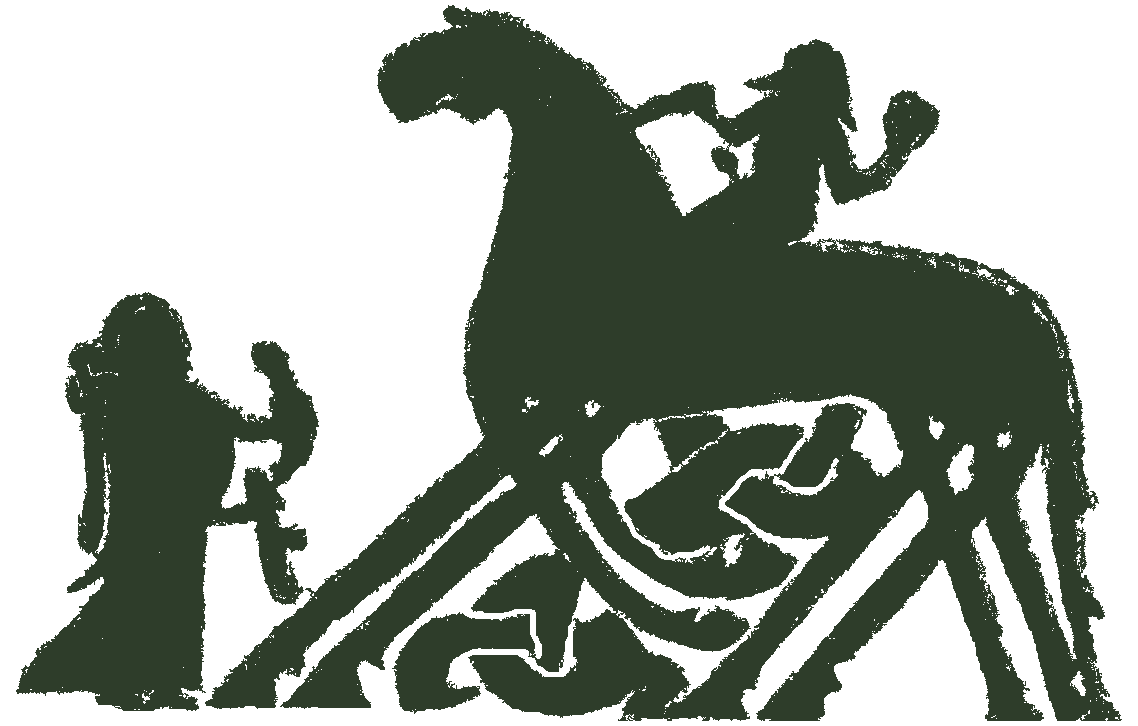4. The “Research and Reception” Strand
This is not currently part of the peer-reviewed material of the project. Do not cite as a research publication.
Over the millennia since pre-Christian religions were actively practiced, European – and later Western – society has developed a fascination with the beliefs of Northern Europe before the arrival of Christianity, which have been the subject of a huge range of popular and scholarly theories, interpretations and uses. Indeed, the pre-Christian religions of the North have exerted a phenomenal influence on modern Western culture, with themes and motifs appearing in everything from Hollywood blockbusters to the names of days of the week (e.g. “Thursday” = “Thor’s Day”).
Scholarly treatments have been hardly less varied. Theories – from the Middles Ages until today – have depicted these pre-Christian religious systems as dangerous illusions, the works of Satan, representatives of a lost proto-Indo-European religious culture, a form of “natural” religion, and even as a system non-indigenous in origin, derived from cultures outside Europe.
The “Research and Reception” Strand of this project will add a new dimension to the study of these pre-Christian religions by seeking to establish a definitive survey of the current and historical uses and interpretations of pre-Christian mythology and religious material. The two printed volumes of this strand will cover a breadth of topics beyond any single work published to date, including subjects such as Roman depictions of “barbarian” religions, the links of northern mythology with the rise of European (romantic) nationalism and concepts of ethnic purity, the reinterpretation of such source material as the foundation of New Age religions, and its influence on modern Fantasy literature. While some popular works with a similar focus have been published in recent years, most have focused on strictly delineated periods – such as the nineteenth century, or Nazi Germany – and none have attempted the breadth or scholarly depth fundamental to the work of the “Research and Reception” Strand of the Pre-Christian Religions of the North project.
Subjects considered under the study of the reception of pre-Christian religious material will include, but not be limited to:
- Scandinavian folklore beliefs and practices, including the practice of magic and shamanism
- The rise of early “antiquarianism”, anthropology and ethnology
- Political and ethnic programmes using material related to the pre-Christian religions of the North as a point of identification of a supposed pan-Germanic racial group or of specific racial-cultural-religious configurations
- Ásatrú and other New Age religions
- Conceptualisations of “the North” from the Middles Ages to the present day
- Modern literature and other media, particularly in the rise of the fantasy genre, and its dependant comics and films
- Modern music, particularly metal and folk music
- Commercial and sporting enterprises and their branding and marketing
Edited by Margaret Clunies Ross (of the University of Sydney) and represented on the Executive Board by Ármann Jakobsson (of the University of Iceland), the volumes of the “Research and Reception” Strand are fundamentally innovative in their treatment of historical research into the pre-Christian religions of Northern Europe. Rather than treating work such as that of early giants including the Grimm Brothers, James Frazer and J.R.R. Tolkien as simple scholarship, this strand acknowledges such research as part of the subject’s reception history, and that research, while from the beginning concerned with kinds of truth, is also concerned with interpretation in the context of a particular researcher’s ideology. This approach will not be limited to works of the modern age, but will also examine the very sources themselves – particularly the key medieval textual sources such as Snorri Sturluson’s Edda and the Gesta Danorum of Saxo Grammaticus – as products of scholarship, interpretation, and a creative process. As such, the work of this strand will examine popular and academic theories concerned with pre-Christian religions in Northern Europe from the arrival of Christianity until the present day, including the interpretations of movements such as the various anthropological schools of thought; structuralism and post-structuralism; psychological approaches; syncretism and the interpretatio christiana; archaeological theories; gender-based readings; and the examination of the relationships between Northern Germanic and non-Germanic religions such as those of the Sámi, Baltic peoples, and Celts.
The work of the “Research and Reception” Strand was the first strand of the project to be gotten fully underway, and has been extensively supported by the Australian Research Council. Scheduled for completion by 2015, the volumes of this project will result in the re-examination of centuries of tacit assumption regarding the reception, interpretation and use of pre-Christian religious material.
